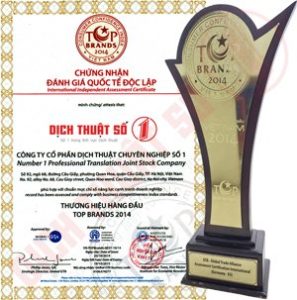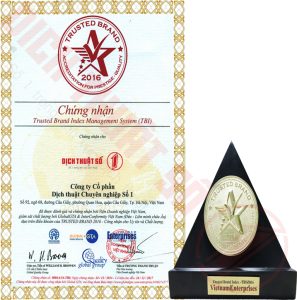Katakana is one of the three alphabets of Japanese., used mainly for foreign loanwords, proper names, place names, and onomatopoeia.
Katakana alphabet has similar writing Hiragana but with a more angular and simpler shape. Together No.1 Translation Learn more about this writing system and discover how to learn it most effectively.
>>> See more: Japanese translation professional
Origin and Function of the Japanese Alphabet Katakana
Katakana appeared around the 9th century, along with the Hiragana alphabet. It was developed from complex parts of Chinese characters.

The name “Katakana” comes from “Kata” meaning “part” or “fragment” and “kana” meaning “pseudo-character”. This name refers to the origin of Katakana from the constituent parts of Chinese characters.
Katakana has many functions in Japanese such as:
- The Japanese alphabet Katakana is used to transcribe foreign words, including writing words borrowed from other languages, such as people's names, place names, and brand names.
- Katakana is also used to emphasize words or create distinction in writing.
- Katakana is used to write the names of animals, plants, and other scientific terms.
- Finally, it is also used to simulate sounds and noises, as well as in telegraphy and Morse code.
>>> See more:
- Translate from Vietnamese to Japanese
- Translate from Japanese to Vietnamese
- Notarized Japanese Translation
Full Katakana Japanese Alphabet
Below is the complete Katakana alphabet, including basic, opaque, and compound sound groups:
Basic Katakana Chart
A | I | U | E | O | |
K | ka | ki | ku | ke | no |
S | sa | Shi | su | (se) | so |
T | me | chi | tsu | te | big |
N | Na | (ni) | (nu) | (ne) | yes (no) |
H | ha | hi | fu | he | cough |
M | ghost | me | (mu) | me | mo |
Y | yes | ユ (yu) | (yo) | ||
R | out | (ri) | ru | re | ro |
W | wa | wo | |||
N | ン (n) |
Dakuon (濁音 – Dakuon)
Add the 탁점 (゛) mark to the upper right corner of the character to create a dull sound:
- G: ガ (ga), ギ (gi), グ (gu), ゲ (ge), ゴ (go)
- Z: ザ (za), ジ (ji), ズ (zu), ゼ (ze), ゾ (zo)
- D: ダ (da), ヂ (ji), ヅ (zu), デ (de), ド (do)
- B: バ (ba), ビ (bi), ブ (bu), ベ (be), ボ (bo)
Handakuon (半濁音 – Handakuon)
Add a small circle (゜) to the upper right corner of the H row character to create a digraph:
- P: パ (pa), ピ (pi), プ (pu), ペ (pe), ポ (po)
Complete set of how to read Japanese Katakana alphabet
To learn the Japanese alphabet easily and remember the characters quickly, you can use the method combined with visual symbols. Here is an example of learning with images:
How to read the Japanese Katakana alphabet: ア(a) – イ(i) – ウ(u) – エ(e) – オ(o)
How to read カ – キ – ク – ケ – コ

How to read サ – シ – ス – セ – ソ
How to read: タ – チ – ツ – テ – ト
How to read ナ – 二 – ヌ – ネ – ノ
How to read ハ – ヒ – フ – ヘ – ホ
How to read マ – ミ – ム – メ – モ
How to read ヤ – ユ – ヨ
How to read ラ – リ – ル – レ – ロ
How to read ワ – ヲ – ン
How to write Katakana letters
Learning to write Katakana is not as difficult as you might think. With the right tools and a solid grasp of the rules, you will quickly master these angular letters.
- Tools Needed:
Graph paper: Using graph paper, especially 5×5 squares or large squares divided into 4, will help you practice writing Katakana neatly and proportionally.
Writing pen: Choose a pen with soft and bold lines such as an A pen, fountain pen or 2B, B, 8B pencil to create clear and beautiful handwriting.
- Writing Rules:
Stroke order:
Top first – bottom last: Complete the top strokes before writing the bottom strokes.
Left first – right later: Write the left strokes first, then the right strokes.
Stroke style:
Horizontal first – vertical later: Write horizontal strokes first, then vertical strokes. Vertical strokes are usually the last stroke.
Comma first – mark later: The comma (丿) is written first, followed by the mark (乀).
- For Kanji:
For Katakana characters derived from Chinese characters, write the outer envelope first with a vertical stroke from left to right, and the closing horizontal stroke last.
How to learn Katakana alphabet quickly and remember it for a long time
To learn Katakana alphabet effectively and easily, there are some methods you can refer to as follows:
- Write and Practice: Start by writing and practicing letters regularly. Use graph paper and a soft pencil to write. You can write in a pattern before moving on to freehand writing.
DOWNLOAD Katakana Writing Notebook
- Use of Images: Make Katakana alphabet into vivid and eye-catching images to learn. Stick them around your study corner or store them on your electronic device for easy reference and memorization.
- Learn Through Songs: Use fun songs and cute pictures to learn Katakana alphabet. Combining listening and seeing will help stimulate the brain and remember more effectively.
- Association and Creativity:Associate Katakana letters with interesting images or stories. Create new associations yourself to help your brain work and remember better.
- Using Flashcards: Using flashcards to learn Katakana alphabet is a popular and convenient way to learn. You can create your own or buy ready-made flashcards to study anytime, anywhere.
With these learning methods, you will have the opportunity to master the Katakana alphabet quickly and effectively.
Mastering Katakana not only improves your ability to read and write Japanese, but also helps you better understand Japanese culture and language. Hopefully the information in the article will be useful in your Japanese learning process. If you have any Japanese translation needs, please contact Dich Thuat So 1 for advice.








